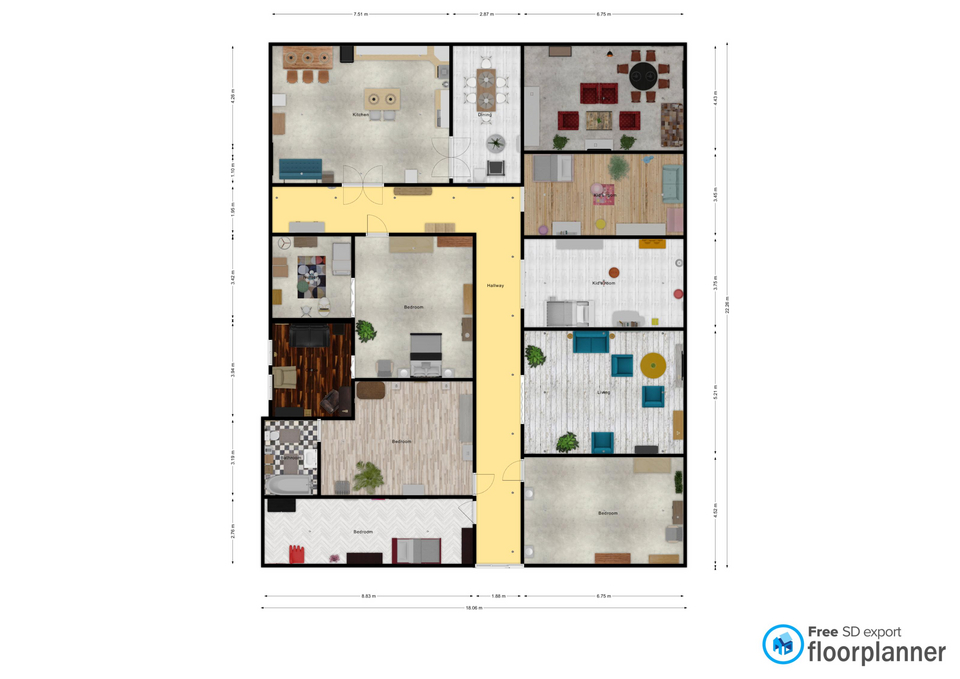
It makes total sense that you might not know the difference between a hallway and a corridor. After all, they seem to be used quite a lot in the same kind of context, right? However, there are some small differences between a hallway and a corridor. In this article, we will explain more about these differences.
- A corridor is often to connect
- A hallway can be two things, an entrance or a passageway
- A hallway is a corridor, but a corridor is not always a hallway
A corridor is often to connect
Corridors are often narrow. The width can vary depending on the usage. For example, in hotels, the corridors are a bit wider than in office buildings, because suitcases and trolleys need to pass through them. Corridors are passageways to connect different parts of the building. It can also be an external place that connects two different buildings.
A hallway can be two things, an entrance or a passageway.
A hallway can fit the description of a corridor; when it is to describe a passage in a house with rooms on both sides of it. The word hallway can also be used to describe the entrance hall of a house. This is a space before/after the front door, and when it is called a hallway, it is often narrow and long.
A hallway is a corridor, but a corridor is not always a hallway
As shortly mentioned above, a hallway is the same as a corridor. Both are in a building, used as a passageway, both narrow, with doors on the sides. However, a corridor is not always the same as a hallway. A corridor can also be outside a building, on ships and trains, which is not the case when someone is talking about a hallway.